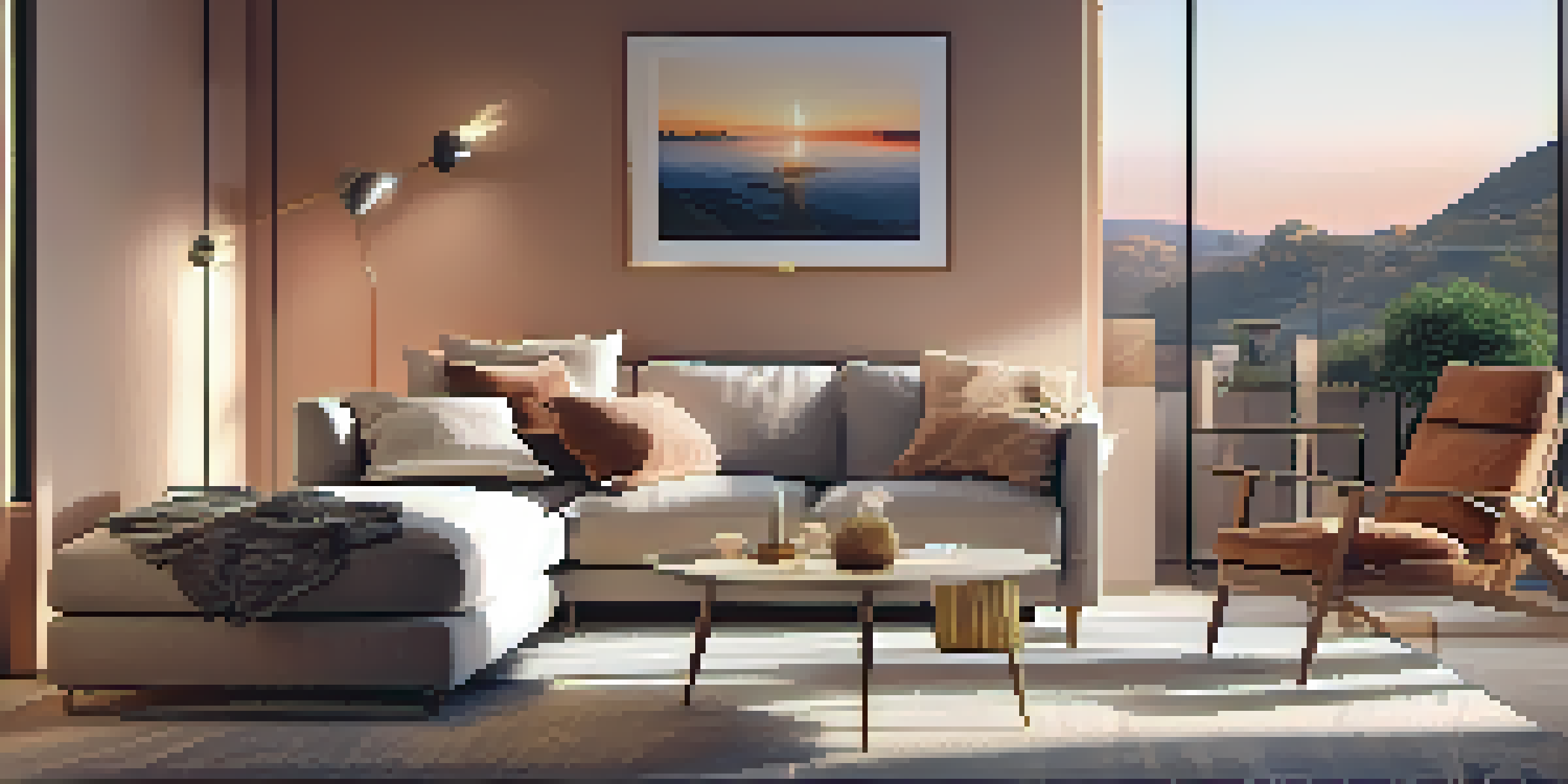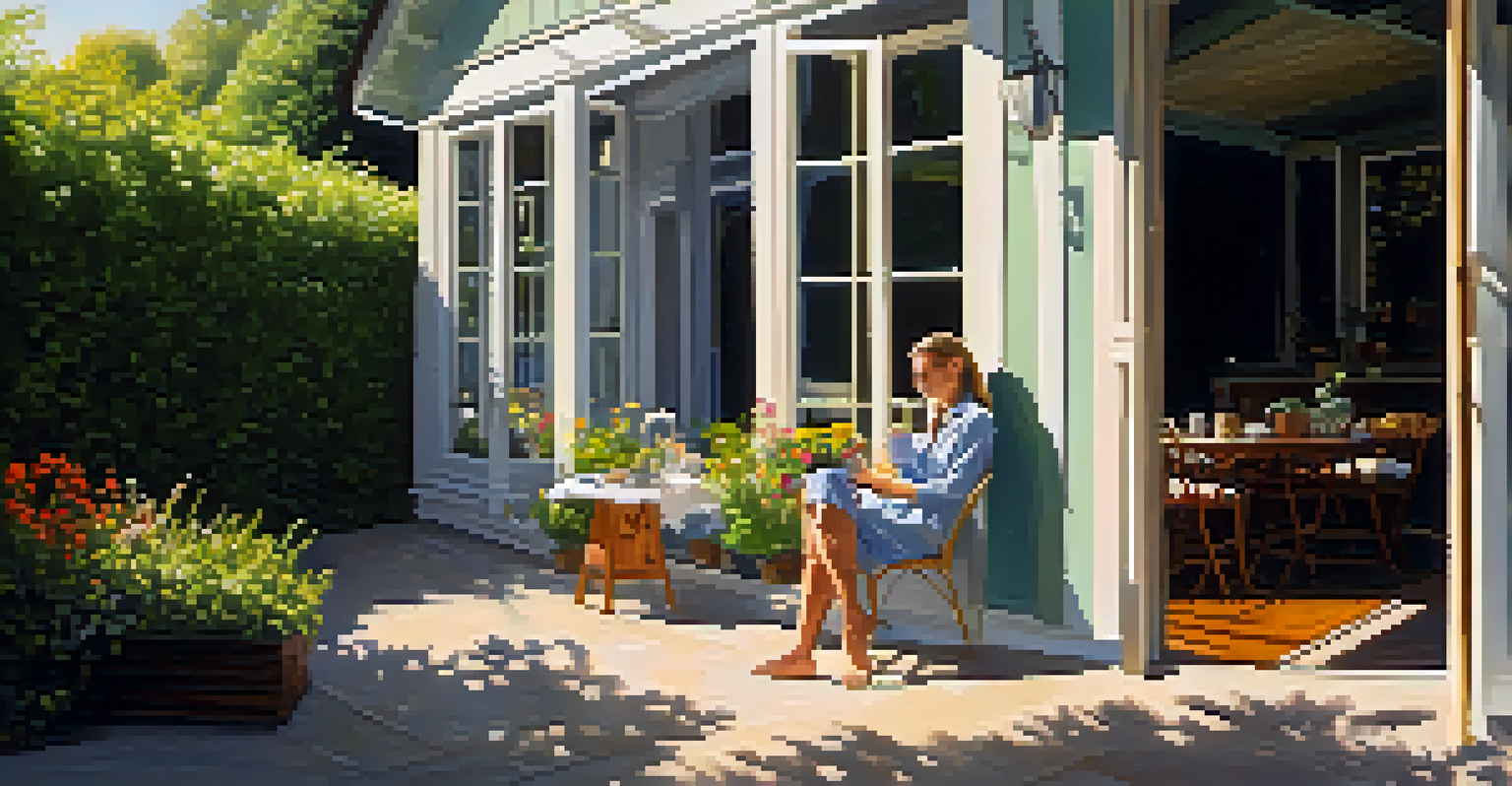How Light Exposure Affects Sleep Hygiene and Patterns

The Science of Light and Sleep Connection
Light plays a crucial role in regulating our sleep-wake cycle, known as the circadian rhythm. This internal clock is influenced by various factors, with light being a primary one. When our eyes perceive light, it signals to the brain to suppress melatonin production, the hormone responsible for sleepiness.
Sleep is the golden chain that ties health and our bodies together.
During the day, exposure to natural sunlight helps keep our circadian rhythms aligned, promoting alertness and energy. However, as night falls, the decrease in light triggers melatonin release, preparing our bodies for sleep. Understanding this connection can help us make informed choices about light exposure.
Essentially, the right amount of light at the right time can enhance sleep quality and overall well-being. This means that managing light exposure is not just a matter of preference but a vital aspect of maintaining good sleep hygiene.
How Blue Light Affects Sleep Quality
In our modern world, blue light from screens has become a significant concern for sleep hygiene. Devices like smartphones, tablets, and computers emit high levels of blue light, which can interfere with melatonin production. This disruption can lead to difficulties falling asleep and lower sleep quality.

Studies have shown that using screens before bedtime can trick our brains into thinking it’s still daytime. As a result, we may feel more alert and find it harder to wind down. This phenomenon highlights the importance of managing screen time in the evening.
Light Regulates Sleep Cycles
Light significantly influences our circadian rhythms, affecting melatonin production and overall sleep quality.
To mitigate the effects of blue light, consider implementing a digital curfew. Aim to reduce screen use at least an hour before bedtime, allowing your body to naturally prepare for sleep and improve overall restfulness.
Natural Light Exposure and Its Benefits
Natural light exposure during the day is beneficial for regulating sleep patterns. Sunlight helps to reinforce our circadian rhythms, making us feel more awake and alert during the day. By soaking up sunlight, we signal to our bodies that it's time to be active, which can lead to a more restful night.
The best bridge between despair and hope is a good night’s sleep.
Incorporating outdoor activities into your daily routine can have a significant positive impact on your sleep. Whether it’s a morning walk or simply enjoying a coffee outside, these moments of light exposure can enhance your mood and energy levels.
Additionally, try to keep your living spaces well-lit during daytime hours. This practice not only boosts productivity but also signals to your body that it's time to be awake, which can make transitioning to sleep at night easier.
The Role of Light in Sleep Environment
Creating a sleep-friendly environment involves managing light levels in your bedroom. For optimal sleep hygiene, your sleep space should be dark, quiet, and cool. Light-blocking curtains or sleep masks can help eliminate unwanted light and promote deeper sleep.
Moreover, consider the use of dim lighting in the hours leading up to bedtime. Dimming lights can signal to your brain that it’s time to wind down, creating a more calming atmosphere. This simple change can make a significant difference in your ability to fall asleep.
Blue Light Disrupts Sleep Quality
Exposure to blue light from screens can hinder melatonin production, making it difficult to fall asleep.
Remember, your sleep environment plays a vital role in your sleep quality. Taking steps to minimize light exposure in your bedroom can lead to more restful nights and energized days.
The Impact of Seasonal Changes on Light Exposure
Seasonal changes can significantly affect light exposure and, consequently, our sleep patterns. For example, during winter months, shorter days mean less natural light, which can lead to feelings of sluggishness or even Seasonal Affective Disorder (SAD). This reduction in light can disrupt our circadian rhythms, impacting sleep quality.
Conversely, longer summer days provide ample light, which can lead to later bedtimes and shorter sleep duration for some. Understanding how the seasons affect light exposure can help you adapt your sleep hygiene practices accordingly.
Consider implementing strategies like light therapy during darker months to simulate sunlight exposure. This can help maintain your circadian rhythm and improve overall well-being during times of limited natural light.
Influence of Artificial Lighting on Sleep Patterns
Artificial lighting has become a staple in our daily lives, yet it can disrupt our natural sleep patterns. Bright overhead lights and harsh fluorescents in the evening can trick our brains into thinking it’s still daytime, hindering our ability to relax and prepare for sleep. Being mindful of the type of lighting we use in the evening is crucial.
Opting for softer, warmer lights in the evening can help create a more restful environment. Consider using lamps with warm-toned bulbs or LED lights that mimic sunset hues to promote relaxation and signal to your body that it’s time to wind down.
Create a Sleep-Friendly Environment
Managing light levels in your bedroom, such as using blackout curtains, is essential for promoting deeper sleep.
By consciously choosing the type of artificial lighting in your home, you can positively influence your sleep patterns and enhance your overall sleep hygiene.
Tips for Managing Light Exposure for Better Sleep
To effectively manage light exposure for improved sleep, start by establishing a consistent sleep schedule. Going to bed and waking up at the same time daily can help regulate your circadian rhythm. Pair this with strategic light exposure, like getting outside in the morning and minimizing evening light.
Consider implementing a wind-down routine that includes dimming lights and reducing screen time as bedtime approaches. This will help signal to your brain that it’s time to relax and prepare for sleep.

Lastly, invest in blackout curtains or sleep masks if your bedroom isn’t as dark as you’d like. Creating a dark sleeping environment is essential for melatonin production and can significantly enhance your sleep quality.